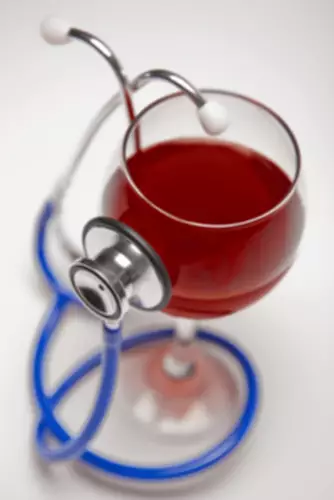
In addition, 4/5 of the reviewed economic studies found substantial cost-saving benefits in using AA/TSF [228]. Of note, clinically delivered TSF interventions designed to increase AA participation lead to increased rates of continuous abstinence, an effect largely achieved by fostering increased AA participation beyond the end of the TSF intervention. However, AA opposes any therapeutic approach that does not endorse abstinence as its end goal [228,229].
- GABA is the principal inhibitory neurotransmitter in the adult human central nervous system.
- According to WHO, alcohol is implicated as a risk factor in over 60 health disorders including high blood pressure, stroke, coronary heart disease, liver cirrhosis and various cancers.
- For example, rats will respond for alcohol infusions directly into the stomach (Fidler et al. 2006), blood stream (Grupp 1981), or brain (Gatto et al. 1994).
- Consistent with this hypothesis is the finding that severity of alcohol and drug withdrawal symptoms may be a powerful marker of neuropsychological impairments in detoxified older human adolescents and young adults (Brown et al. 2000; Tapert and Brown 1999; Tapert et al. 2002).
- Nonetheless, a common theme did emerge when formal studies of motor performance were included in neuropsychological assessment—namely, that alcoholics can perform eye-hand–coordinated tasks at normal levels but do so at slower speed (Johnson-Greene et al. 1997; Sullivan et al. 2002).
Alcohol Dependence vs. Alcohol Abuse: What’s the Difference?
- A recent alcohol needs assessment in England identified nearly 700 agencies providing specialist alcohol treatment, with an estimated workforce of 4,250 and an annual spend of between £186 million and £217 million (Drummond et al., 2005; National Audit Office, 2008).
- Not all alcoholics, however, exhibit impairment in all of these functions, thereby adding to the heterogeneity of the expression of the alcohol dependence syndrome.
- The eCB system function is also affected by alcohol both acutely and chronically [132], and this system likely plays a complex role in addiction and withdrawal.
- The test is free, confidential, and no personal information is needed to receive the result.
Thus, if only mild electrical stimulation of a certain brain region is required to maintain responding, ICSS is said to have a high reward value; if, by contrast, a stronger electrical stimulation of a given brain region is required, then ICSS is said to have a lower reward value. Alcohol increases the reward value of ICSS because in the presence of alcohol, weaker electrical stimulation is required to maintain responding (e.g., Lewis and June 1990). Scientists have known that men and women have different risks related to alcohol misuse and related problems and that alcohol treatments may need to be tailored differently to men and women. However, the biological mechanisms underlying those differences are not well understood. Al-anon uses the same 12 steps as AA with some modifications and is focused on meeting the needs of friends and family members of alcoholics.

12.1. Children and young people

In addition, your alcohol use may significantly impact your personal, professional, and social life. You may struggle with maintaining relationships with friends or family, and personality changes may occur. Physical effects, such as organ damage and changes to your outward appearance, may also start to present. Alcohol addiction is a psychological disease defined as one’s inability to control alcohol consumption. This umbrella term illustrates a form of high-risk drinking that typically includes excessive drinking, an intense alcohol craving, and continued alcohol use despite realizing how it interferes with your daily life.
If You Have an Addiction
But drinking any amount of alcohol can potentially lead to unwanted health consequences. The National Center for Drug Abuse Statistics says more than 20 million people over the age of 12 in the United States have substance use disorder. Addiction is considered “highly treatable.” But it can take a few tries for the therapy to be fully effective. Noteworthy, chronic alcohol use has also been linked to changes in multiple intracellular signalling pathways that can affect synaptic function directly or indirectly. These include alterations in adenosine signalling [187,188], as well as changes in PKC and adenylate cyclase activity [189,190,191].
National Institute on Alcohol Abuse and Alcoholism (NIAAA)
In studies of male and female rats, chronic alcohol consumption (an alcohol diet) for the length of adolescence was found to stunt limb growth. One study found that feeding female rats alcohol in a way that mimics binge drinking physiological dependence on alcohol resulted in either increases in bone length and density or in no change with more frequent bingeing. In human adolescent males but not females, studies have found that alcohol consumption decreases bone density.
9. CURRENT CARE IN THE NATIONAL HEALTH SERVICE
These considerations lead to a paradigm shift and the search for alcohol-responsive sites on brain proteins (Franks and Lieb 1987; Harris et al. 2008). Nevertheless, emerging evidence shows a role for lipids in the regulation of many ion channels, and there still is interest in the possibility that alcohol can alter these lipid– protein interactions and thus alter protein function (Yuan et al. 2008). Alcohol dependence and alcohol abuse were two designations previously recognized in the DSM-IV. While no longer separate diagnoses, it can be helpful to understand the differences between the two. « Dependence » refers to being unable to stop drinking without experiencing withdrawal symptoms while « abuse » refers to continuing to consume alcohol despite adverse consequences. When addiction is related to drugs or alcohol, the condition is also called a substance use disorder.
When you first start drinking alcohol, it may have taken only a few drinks for you to feel drunk. Additionally, chronic alcohol consumption has been shown to reduce total sleep time as well as quality [2]. Behavioral therapies can help people develop skills to avoid and overcome triggers, such as stress, that might lead to drinking. Medications also can help deter drinking during times when individuals may be at greater risk of a return to drinking (e.g., divorce, death of a family member).

The idea that alcohol is only a “pro-drug” and that acetaldehyde is the effective agent has a boomerang quality because it is discarded every few years, only to return later. In fact, evidence continues to accumulate that alcohol consumption can result in brain acetaldehyde levels that may be pharmacologically important (Deng and Deitrich 2008). However, the role of acetaldehyde as a precursor of alkaloid condensation products is less compelling.
Brain Circuits Mediating Alcohol Reinforcement
Other studies in both human subjects and animals suggest that the adolescent brain may be more vulnerable than the adult brain to chronic alcohol abuse. Several terms including ‘alcoholism’, ‘alcohol addiction’, ‘alcohol abuse’ and ‘problem drinking’ have been used in the past to describe disorders related to alcohol consumption. However, ‘alcohol dependence’ and ‘harmful alcohol use’ are used throughout this guideline to be consistent with WHO’s International Classification of Mental Disorders, 10th Revision (WHO, 1992). Older people are at least as likely as younger people to benefit from alcohol treatment (Curtis et al., 1989). Clinicians therefore need to be vigilant to identify and treat older people who misuse alcohol. As older people are more likely to have comorbid physical and mental health problems and be socially isolated, a lower threshold for admission for assisted alcohol withdrawal may be required (Dar, 2006).
Further, it is important to note that due to age-related changes in metabolism, intercurrent ill health, changing life circumstances and interactions with medications, sensible drinking guidelines for younger adults may not be applicable to older people (Reid & Anderson, 1997). Equivalent levels of alcohol consumption will give rise to a higher blood alcohol concentration in older people compared with younger people (Reid & Anderson, 1997). The US National Institute of Alcohol Abuse and Alcoholism (NIAAA) has therefore recommended people over the age of 65 years should drink no more than one drink (1.5 UK units) per day and no more than seven drinks (10.5 UK units) per week. A related issue is that standard alcohol screening tools such as the AUDIT may require a lower threshold to be applied in older people (O’Connell et al., 2003). Although not directly comparable because of different methodology, a low level of access to treatment is regarded as one in ten (Rush, 1990).
